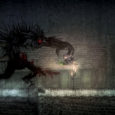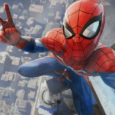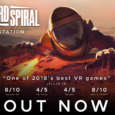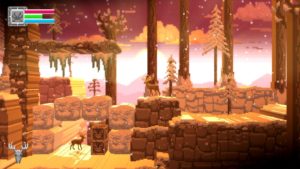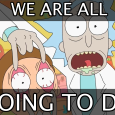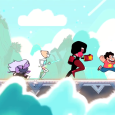The Yakuza series started back in 2006 for all of us here in the West. Twelve years later, the game is putting out its sixth numbered entry and wrapping up the entire Kazuma Kiryu saga. The legacy of this series is steeping in memorable characters and most importantly, good storytelling. Yakuza 6 takes twelve years of lessons learned and combines them into one ultimate package, creating an outstanding finale.
Yakuza has been at the forefront a lot over these last couple of years. With the series prequel Yakuza 0 and the Kiwami remakes of 1 and 2, it’s an excellent time to get into the series. Even if you refuse to put in the numerous hours it would take to complete the whole series, newcomers will find themselves very informed with the characters and world of Yakuza. Thanks to the assortment of flashbacks, previous game synopsis via the game menu, set ups, meet and greets and what-have-yous, the game will do everything it can to keep new players up to date with the story as a whole. Now of course if you are a returning fan you will get a much more elevated experience, having intimate knowledge of the previous games. Don’t let the number fool you though, this is a fine place to start up your adventure with Kazuma Kiryu.
Strap in for long, dialog heavy cutscenes. Every few steps you make, and every bit of progress is bookended by lots and lots of exposition. Not that we’re complaining! Newcomers might be thrown off a bit but longtime fans will feel right at home. Think Metal Gear Solid length cutscenes here – the kind where it’s just better to put down the controller and enjoy the show while you get wrapped up in the game’s incredible narrative. Familiar faces will pop up, and while not every cast member gets big moments, I never felt cheapened by the omission or lack of some of my favorite supporting characters from previous games. Story and characters are always at the forefront of this series, and The Song of Life is no different. The focus on narrative may feel slow to some, especially in the early hours of the game, but there is a lot to set up and explain before the real meat of the adventure begins. Those excited to put a hurt on people, will need to practice a bit of patience as they work their way into some of the more consistent action.

Graphics are obviously the best they have ever been in Yakuza 6. Sure, it might fall just short of other open world games from this generation, but the character models are a real standout. Even patrolling around the city at night can be a great visual feast, as the neon signs of Kamurocho reflect off the streets. Character animations are good as well, as a nice natural feeling is given off as character talk, walk, converse, and interact with one another.
Coming back to the city of Kamurocho is always a treat since we’ve been stomping around on these grounds for 12 years now. While reusing locations and assets are considered negatives in most games, in Yakuza 6 this works and is most welcomed. Kamurocho is Kiryu’s home, so the familiarity the city brings works well with player immersion. The passing of time has changed Kamurocho in many ways. Sure buildings may be where they used to be, but new shop locations keep the player exploring as things are as modern as ever. Playing Yakuza 0 and playing Yakuza 6 offers two very different versions of Kamurocho, despite it being the same city, and is a true example of how time morphs all things.
Modernizing everything as time passes is a theme in the Yakuza story, mechanics, and aesthetic. Gone are the scattered phone booths and in turn, the archaic saving system that goes along with it. Now you’ve gotten with the times and have a cell phone with a generous autosave system. This really streamlines the game as when you are winding down with your playthrough, you don’t need to worry about how close a save point is. The save point is always in your pocket for you to manually save or the autosave feature will kick in upon almost every time hitting the “start” button.
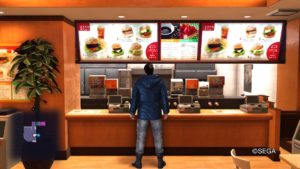
Eating and drinking are as important as ever now. These mechanics have always been in previous games, but now it’s a big way to get experience points. Pairing multiple combinations of things on the menu will give you increased boosts of experience. A lot of my money went to spending on food, and finding the right combos was fun, as I monitored my hunger meter. You don’t ever starve or go hungry and the game does not require you to eat, but there it is much fun to be had by going into new restaurants, seeing what they serve, and trying to get the most out of your money. To deplete your hunger meter, you just need to run around and fight. It is pretty easy to nab a meal after every encounter, thus maximizing your experience gained.
Experience can be used in five different categories, with each category unlocking new skills and permanent buffs. Choosing how to shape your character and what to spend points on is up to you, but don’t be surprised if you have everything unlocked after your run time of the game. You also have control over a few item slots. As you buy and pick up wearable items, you can equip them to further increase specific stats. I found changing things around in my inventory made some fights much easier. Don’t worry too much about it though, because the difficulty, like other Yakuza games, is very low.
Substories are back, and in plentiful amount. The Yakuza series has always done a great job at committing to a balancing act of extreme goofiness along with the drama of a real soap opera starring hardened gangsters. One moment you are fulfilling a mission that has some emotional payoff, the next you are fighting ghost pirates in a cemetery. It’s all very surreal. It has to be a hard line to walk because I never feel like my immersion breaks while doing some of the more sillier tasks. Everything feels like it belongs in this world.
 There are so many other side activates to do as well that will distract you from the main adventure. Karaoke is back, going to a cat café, visiting shrines, having a drink with friends, shark hunting/fishing, and of course, working out at the gym, putting a baby in a good mood, are some of the things you will find throughout the world. The main plot may be the priority but you always have time for a small detour in one of these many side attractions.
There are so many other side activates to do as well that will distract you from the main adventure. Karaoke is back, going to a cat café, visiting shrines, having a drink with friends, shark hunting/fishing, and of course, working out at the gym, putting a baby in a good mood, are some of the things you will find throughout the world. The main plot may be the priority but you always have time for a small detour in one of these many side attractions.
We also get a gang creator. You will be recruiting and locating an assortment of gang members to join you in a new mini game. It functions like a tower defense game in that you are populating troops by expending points that you gain from actions or over time. It is a good time waster but it is not the most engaging mini game in the Yakuza series. Leveling up troops was simple but fun. I still found myself wasting a few hours with it, so something about it kept keeping me coming back! Watching your troops level up, and putting them in the right chain of command was rewarding. I will say that there was one other mini game I found that was just outright strange. There are online chat rooms with babes to fake talk to, and these mini games are awkward and weird. You spend time doing button prompts (quick time events) while talking to a real (live actor) lady who may or may not be stripping. Thanks Japan!
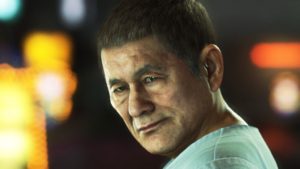 One of the biggest takeaway for me was the inclusion of actor, director, and icon, Beat Takeshi. You may know Takeshi Kitano from other Yakuza films or TV (unrelated to this game). His major works are: starring in Battle Royale, and directing the movie Brother, among many others. Beat Takeshi offers a very memorable character in the game’s narrative, and every time he came on screen it made me forget I was playing a game, and trick me into thinking this is one of his MANY Yakuza movies.
One of the biggest takeaway for me was the inclusion of actor, director, and icon, Beat Takeshi. You may know Takeshi Kitano from other Yakuza films or TV (unrelated to this game). His major works are: starring in Battle Royale, and directing the movie Brother, among many others. Beat Takeshi offers a very memorable character in the game’s narrative, and every time he came on screen it made me forget I was playing a game, and trick me into thinking this is one of his MANY Yakuza movies.
The story in Yakuza 6 The Song of Life here revolves around one of Kiryu’s children going missing. Kiryu oversees an orphanage in which he is responsible for many kids. The narrative begins with one of the children leaving the orphanage and losing contact. Kiryu, hot off of being in jail, must track her down. This leads him back to a Kamurocho which is now overran by Triad who are going to war with the local Yakuza. These events drag Kiryu back into his old life, and guides him towards a new location, Onomichi in Hiroshima. This somewhat simple mystery turns into a complex narrative with an third act that pays off in some very big ways. Longtime fans of the series will get one of the best endings any game series has ever had, and leave you fulfilled in every way. Few games in the industry can claim such a feat.
The overarching themes of fathers and son, and what parents are willing to do for their children as well as what children are willing to do to gain acceptance and approval from their parents, are powerful and meaningful. These themes give the game’s narrative much life and weight. The different types of relationships shared between all the parents and children showcases a world of gray morality. alongside this, it juggles a tale of old versus new. Kiryu is an old school Yakuza, from a different time, and things have changed within the organization. These changes and this younger guard who are taking over, act as another driving force in the narrative. Time again has changed something we once knew, morphing it into something unfamiliar.
Yakuza 6 feels better than ever. I suffered from zero crashes, and if I witnessed any glitches I was unaware of them. I did not suffer from much, or any framerate slowdown. The loading screens are minimal and short, really keeping you engaged and in the world. The combat itself is smooth and putting the hurt on people never gets old. You feel pretty powerful at the start of the game, so by the end you are practically a one man army. Gone are playing with other characters, and swapping your fighting style. While these may seem liek steps back, it actually focuses the mechanics and the story, and keeps you right in the shoes of Kiryu. All of the fighting and exploring are complimented with a great soundtrack. Lots of guitar riffs over synthy harmonies fits the tone well, but it is not unlike previous entries. I will say a particularly jazzy inspired song in the new area of Onomishi is a great standout.

Yakuza 6 The Song of Life ended up being about a 21 hour experience for me. I did plenty of side stuff and it felt like I took my time. This run time makes the game feel much shorter than previous titles, but be aware that there was easily 10 more hours of side content for me to get into. Despite being plenty distracted there was much I did not get to see or experience, which will make going back into this world all the more of a treat! There is so much being left unsaid about Yakuza 6. The game is wrapped up in an incredible mystery that unravels like a piece of infinite yarn. I always wanted to know what happens next, and no point ever felt like a good stopping point. Yakuza 6 does the impossible and wraps up things in such a satisfying way, that I felt I got everything I could out of these characters and out of the narrative. Twelve years is a long time to stick with the same cast of characters, but no moment ever went wasted, each acting as its own puzzle piece to the greater narrative of the series. You won’t find a more consistent quality series, anywhere else in the industry.
I have been a longtime fan of the Dynasty Warriors series. Developer Omega Force, and publisher Koei Tecmo has always relied on retelling the Records of the Three Kingdoms. Since the first game in 1997, the property has always been about slaying giant forces of soldiers and making you feel like a god on the battlefield. While Dynasty Warriors 9 is no different, it stumbles plenty which keeps it far from being the best entry in the series.
Dynasty Warriors 9 puts story in the driver’s seat. The tale of how the kingdoms of Wei, Wu, and Shu rise, fall, conquer and be concurred, is the propelling force that guides the experience. Long gone are the pre-battle menus and preparations, traded in for an open world and a sense that the battle never stops. While putting the story of each faction in the spotlight is a good move, making the switch to open world has a plethora of shortcomings.
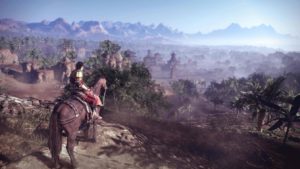 The open world is empty, soulless, and just plain boring to traverse. There are materials to collect, towers to climb, surrounding areas to scout, and animals to hunt. Using materials acquired in the open world allows you to craft new weapons and items. However, none of this feels good, and none of it is in any way interesting or entertaining. The ability to fast travel to previously visited locations on the entire open world map of China is a nice feature, but it almost felt like a death sentence when a fast travel point was not near to my next desired battle. I should not feel like it’s a chore to simply ride a horse across a map.
The open world is empty, soulless, and just plain boring to traverse. There are materials to collect, towers to climb, surrounding areas to scout, and animals to hunt. Using materials acquired in the open world allows you to craft new weapons and items. However, none of this feels good, and none of it is in any way interesting or entertaining. The ability to fast travel to previously visited locations on the entire open world map of China is a nice feature, but it almost felt like a death sentence when a fast travel point was not near to my next desired battle. I should not feel like it’s a chore to simply ride a horse across a map.
The combat has been changed, and while it works and functions well, I had to unlearn about 20 year of Dynasty Warriors mechanics to learn these new ones. Gone are the two button combos, traded in for a less interesting system. Playing on the PS4, I had to utilize the Square button for regular attacks, and then hold down R1 and then choose a face button to do a specific attack, such as a launch, a stun, a special, or the likes. I can’t emphasize enough that the combat works, and when you get the hang of it, it is efficient, but I just prefer the old style system; it felt like it flowed better.

Combat changes and open world issues aside, the story itself has many good things going for it, but just lacks in overall execution.
Leaning about each faction, the characters in the family, and how they impacted the dynasty are all on display. A lot of the history is pretty spot on, which really elevates an overall boring experience. Leaning things like Sun Jian of Wu being a descendant of Sun Tzu was such a delight, and it is just one of many examples. While not 100% historically accurate, the information they do use paints a pretty good portrayal of the events that transpired during these warring times in China.
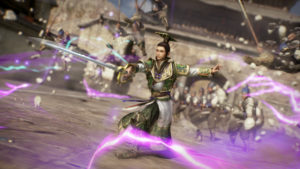 I put about 25 hours or so into the campaign. There are 13 chapters overall in the arcing story of the war, but there are many side stories and arcs such as Lu Bu’s battles. Seeing the “bad guys” perceiving themselves as the “good guys” was pretty entertaining. I was able to complete the entirety of the Wu story, and unlocked the final two chapters that exist only in the Shu story. The game lacks no content, because I could easily dump another 40-60 hours on completing each faction’s story and arc. While the narrative is interesting from a historical standpoint, the execution is just poor, specifically the voice acting being absolutely horrendous. I am talking the worst in any game in recent memory. It has been a while since a numbered entry of Dynasty Warriors has had English voice acting, and while it’s nice to know what people are screaming about in the heat of battle, it is almost offensively bad in terms of quality. Character animations in cutscenes are also awful, and the lack of effective writing really holds the interesting parts of the historical story back.
I put about 25 hours or so into the campaign. There are 13 chapters overall in the arcing story of the war, but there are many side stories and arcs such as Lu Bu’s battles. Seeing the “bad guys” perceiving themselves as the “good guys” was pretty entertaining. I was able to complete the entirety of the Wu story, and unlocked the final two chapters that exist only in the Shu story. The game lacks no content, because I could easily dump another 40-60 hours on completing each faction’s story and arc. While the narrative is interesting from a historical standpoint, the execution is just poor, specifically the voice acting being absolutely horrendous. I am talking the worst in any game in recent memory. It has been a while since a numbered entry of Dynasty Warriors has had English voice acting, and while it’s nice to know what people are screaming about in the heat of battle, it is almost offensively bad in terms of quality. Character animations in cutscenes are also awful, and the lack of effective writing really holds the interesting parts of the historical story back.
 Graphics are a huge issue here as well. How does this world look so poor? How do characters look so bad? Are we sure this is a 2018 game? I know Dynasty Warriors has never been known for its graphics, but this was a time for them to show us what they’ve got. While it is the best looking game in the series, the experience is completely marred by pop in of textures, character models, and mission objectives. So while it is the best in entry in the series, their best is many developer’s worst.
Graphics are a huge issue here as well. How does this world look so poor? How do characters look so bad? Are we sure this is a 2018 game? I know Dynasty Warriors has never been known for its graphics, but this was a time for them to show us what they’ve got. While it is the best looking game in the series, the experience is completely marred by pop in of textures, character models, and mission objectives. So while it is the best in entry in the series, their best is many developer’s worst.
The other big drawback is the actual quests and objectives. Every major battle is appointed a level, and you can bring down that difficulty level by engaging in side activities or quests. What’s cool are these quests have context for the changes they will have in the main battle. What is not cool is that every mission is basically go from point A to point B, and kill the thing. This would be less offensive if the main quests were any different…but they aren’t. In the end you can run straight to that main battle, without having done any side missions, grapple over the walls of the castle you are to infiltrate, run past every enemy and officer and right to the commander, and kill him. Nothing is stopping you from doing this due to the insanely easy difficulty. I was taking posts 10-20 levels higher than myself with extreme ease. So the stakes just felt low, and I never felt any incentive to actual fight my way to a commander.
The biggest offense of this game is the complete lack of co-op, be it online or couch. The series has a had a long time standing feature of couch co-op with a buddy…and yet it is missing from the most recent entry in the series. The online feature is less of a missed opportunity as it was never really the best. People however will still miss the online feature, as it is a pretty standard feature in most games these days. The only thing I wanted to do is run across the world with a buddy, split up, and take on different bases and missions…yet they didn’t even attempt to bring any of that into the fold.

I would feel like a criminal if I did not bring up the fun factor in not only this game, but the entire series. There is something so therapeutic about slaying thousands of enemies without having to really think or even be engaged. It is a very fun experience to see the ongoing battles that you are not even a part of, affecting the front line of battle, as forces push forward and back as they lose and win skirmishes.
Being able to jump from small battles to big battles is also a great way to keep the player in the moment. The fun factor alone is what makes this game worth snagging, especially if you are a long time Dynasty Warriors fan. Newcomers are probably less likely to enjoy this game, because it is showing its age and its lack of overall innovation. However, I do see long time fans being able to find the fun a bit easier, I still think they will recognize the many back steps this entry has taken when compared to previous entries.
I wanted to love this game. I wanted to be the champion of this game, screaming its fun from the mountain tops. Because while this title is fun, it is far from good. I don’t foresee patches or updates fixing the strong issues this game has, but if all you want to do is kill a bunch of melee weapon wielding warriors, this game will serve that up just fine. I just wish they had taken this time to do something more, something bigger… something better.
There I am, waiting at the canteen in town. A posse of muscular cats begins a choreographed cooking session that will help prepare me for what’s to come. My crew continues to complete their preparations for the hunt ahead. I double check my armor and weapons to ensure that they are correct for the monster we are about to fell. Making a few last minute adjustments to my gear, I check in with my mates and we green up to depart for the quest. The moment our feet hit the ground, we are immersed into the universe of Monster Hunter World.
There is nothing more exhilarating than the thrill of the hunt. Capcom’s Monster Hunter series is synonymous with gaming grinds. The series never deviates away from its gameplay loop but it has always complemented the game’s sense of progression. Repeating the same hunt over and over is common place in this series, so repetition is in its DNA. However, the repetitive nature of prepping, hunting, crafting, and recycle is managed by an incredible 4 player co-op experience.
The phases of the game are pretty standard, but every phase is important.
Phase one is hunting, which I have explained above. Prepping is all about preparing your character for the chosen hunt ahead. If you are going after a fire based T-Rex monster, it might be best to wear some fire resistant armor as well as sporting a water based weapon. This will ensure you can take the beating the monster is about to deal, but ensure you can dish out appropriate damage to it as well.
You acquire weapons and armor by felling beasts. Eradicating fauna to get the crafting parts is Phase 2 of this game. Each monster in Monster Hunter World drops its own sets of materials in which you use to craft new weapons and armor. Each material drop has a somewhat random drop rate percentage, which becomes much less random by focusing on attacking key areas of a monster. Does your next upgrade need the nose bone of a beast? Well it is probably best to attack its face. Do you need the tail of an animal? You guessed it, attack its rear and chop that tail off!
There are 14 weapons in the game, each with their own distinct style and animations. You can expect everything from long ranged bows and machine gun like weapons, to more classic affairs like swords, shields, and giant axes. Every hunter will have their favorite weapon, but the game encourages you to try multiple types, if not all of them. Different weapons each serve their purpose in battle, and with a well-rounded team you can become an unstoppable monster slaying force of nature. Armor is very much the same, each piece offering its own sets of buffs, boosts, resistances, and weaknesses. Each weapon and piece or armor is meticulously designed with care, showcasing its own look and aesthetic. This same care and detail translates into the monsters themselves, each one looking distinguished and personal. Looking at your weapons and armor and remembering the monsters you slew to obtain it, is always a gratifying feeling.
When the monster is slain and the quest wraps up, you will get quest rewards which are a bit more random. Players can attempt to bend the odds in their favor by using a lucky ticket voucher to increase rare drop rates. Just prepare yourself to fight the same beast an upwards of 10-15 times if you are trying to complete a matching armor and weapon set.

This leads us into Phase 3, crafting. The quest is wrapped up, and the target monster has been silenced. There are no level ups and there are no skill trees in Monster Hunter World. Instead, it is time to use your spoils of war to create new duds and pokey things. Everything is predicated on the weapons and armor you craft and use. Senselessly slaying beats will get you no stronger, so it is best to focus on the animals you need parts from. After you have completed your crafting and managing other items you acquired from local fauna in your last hunt, it is time to cycle and do it all over again. There is always a new target to go after, or you can hone your technique on beasts you are familiar with.
You can bring a variety of items on your hunt from healing potions, to health buffs, to traps to snag your targets in. Smoke bombs that spew out health, tainted meets, sleeping concoctions, camouflage ghillie suits, and wing glider suits are all just a taste of the tools you can use. All of them are optional to use, but having some of these can be the trump card you need to turn a ferocious fight around. Never leave home without a few tricks up your sleeve.
Utilizing the environment to your advantage is also a must for the more important hunts. The larger the beast, the more important it is to utilize everything around you to chip health away. Hazards such as poisonous plant pods, falling rocks and boulders, getting wrapped up in vines, or gaining the high ground to jump on the monster and rodeo it into submission are all great techniques for a hunter to master.
 Always come prepared to every fight, no matter how small the target. Once you enter one of the many biomes in Monster Hunter World, you have entered into the ecosystem and the food chain. Monsters will hunt one another, engage in turf wars, and fight in giant kaiju inspired fights that are so well animated that you can’t help but to just sit there and watch the tyrants duke it out in awe. Walking into a zone and squaring off with the targeted beast can lead into a battle royale free-for-all where three gigantic monsters occupy the same area, and none are too happy that you are there as well. These chaotic situations cultivate so many stand up and cheer moments that you will constantly find yourself with a smile on your face.
Always come prepared to every fight, no matter how small the target. Once you enter one of the many biomes in Monster Hunter World, you have entered into the ecosystem and the food chain. Monsters will hunt one another, engage in turf wars, and fight in giant kaiju inspired fights that are so well animated that you can’t help but to just sit there and watch the tyrants duke it out in awe. Walking into a zone and squaring off with the targeted beast can lead into a battle royale free-for-all where three gigantic monsters occupy the same area, and none are too happy that you are there as well. These chaotic situations cultivate so many stand up and cheer moments that you will constantly find yourself with a smile on your face.
The monsters themselves have no health bar. The genius in this is that you have to stay engaged and aware of the monster, it’s changes in attack patterns, and it’s evolving aesthetic as you chip away at the beast. As you give it the beat down, the large animals will begin to slow in speed, stumble or limp, drool at the mouth, sever an appendage, and generate scaring and wounds all over its body. When you begin to see these visual cues, you know you are doing the damage that needs to be done. Monster Hunter World may have an unconventional enemy health system, but that is all part of its DNA. Being aware of your surroundings, recognizing patterns and behaviors, and adapting to the situation are all the marks of a great hunter. The glory comes in many forms, but among its most potent is seeing your progression from fighting a monster for the first time, to fighting it for the 10th time. Your technique improves, and you become stronger, making trips back to old areas feels empowering.
When you enter a zone, the first thing you must do is begin to track your target. Footprints will be everywhere, piles of dung, scratch marks, skid marks, and other visual cues will give you clues on the monster’s whereabouts. As you find more of these in environment clues, your scout-flies (glowing insects that act as the in game GPS system) will begin to lead you towards your target. Whittling away at the beast’s health will have it running away. This will queue up the hunt portion again, where you have to track the beast down again for another showdown. This made me feel like a true hunter, as I was always dialed into my surroundings and looking for little indicators to help me in the fights that await me.
Monster Hunter World is made to be experienced with friends, but the addition of a full story mode, characters, and cut-scenes have added an extra layer that just was never present in the series before. While it is a nice addition, it is far from the focus of this game. Story means a lot to me, so while this one falls short, I hate to even focus on it as a shortcoming of the game. The series has always been about slaying monsters, not about crafting a story with memorable characters. There are many missions and quests that range from fetch quests to the staple genocide of gigantic animals. These story missions or simple quests can be taken on in a solo fashion, as can much of the game, but the game enhances with a good, full party. In this sense it is much like Destiny, where the game can be played in either way. So far I have experienced limited online issues, and have found myself in groups with my buddies and random people alike, with extreme ease.
A big stand out that may seem subtle to some is the music composition. The music, composed by Akihiko Narita and Zhenlan Kang, sets the tone in the most perfect way. As you hunt and track your target the music is subtle almost nonexistent as it allows you to be engulfed and immersed in the world around you. The music comes in with full force as you clash with a giant beast. When you have the monster on the run, the music will decrescendo into a more appropriate trot, while you relocate your target. When you lay eyes on it again, the full orchestra will ramp back up organically into the full sound of the fight music. This dance continues until the monster perishes. Little subtleties like this really elevate the experience from a sound perspective, and the attention to detail pays off in the biggest of ways.
At the 56 hour playtime mark, I wrapped up the main story quest and reached “end game.” To most Monster Hunter pros, this is where the true game begins, and the training wheels are taken off. 100 plus more hours of end game content awaits you, as you slay new monsters, go to new areas, and slay bigger and badder versions of previous beasts. You are sure to have months of content here, and with Capcom suggesting that there will be free DLC and events all year long, it seems we will not be running out of things to kill and make clothes out of, anytime soon.
I have been in a love hate relationship with the Monster Hunter series for a long time. Around the 20 hour mark in most of the games I always hit a grinding wall where I just lose sight of the fun. I reached the 24 hour mark on my second sit down session with this game, and never felt more compelled to play it come that 25th hour. For whatever reason, the gameplay loop and the universe they have created in Monster Hunter World is resonating with me in ways I never thought this series could. While not much has changed in the game, everything feels focused and honed. This is the definitive version of the series, and has a presentation that excels on consoles. Perhaps this series works well on handheld systems thanks to their grindy nature, but there is nothing like seeing the game running on the PS4 displayed on a 4K HDR TV. The series is back where it belongs, on home consoles and in stunning HD. Monster Hunter Worlds is easily the first game of the year contender for 2018, and it is a must play for old fans, and newcomers alike.
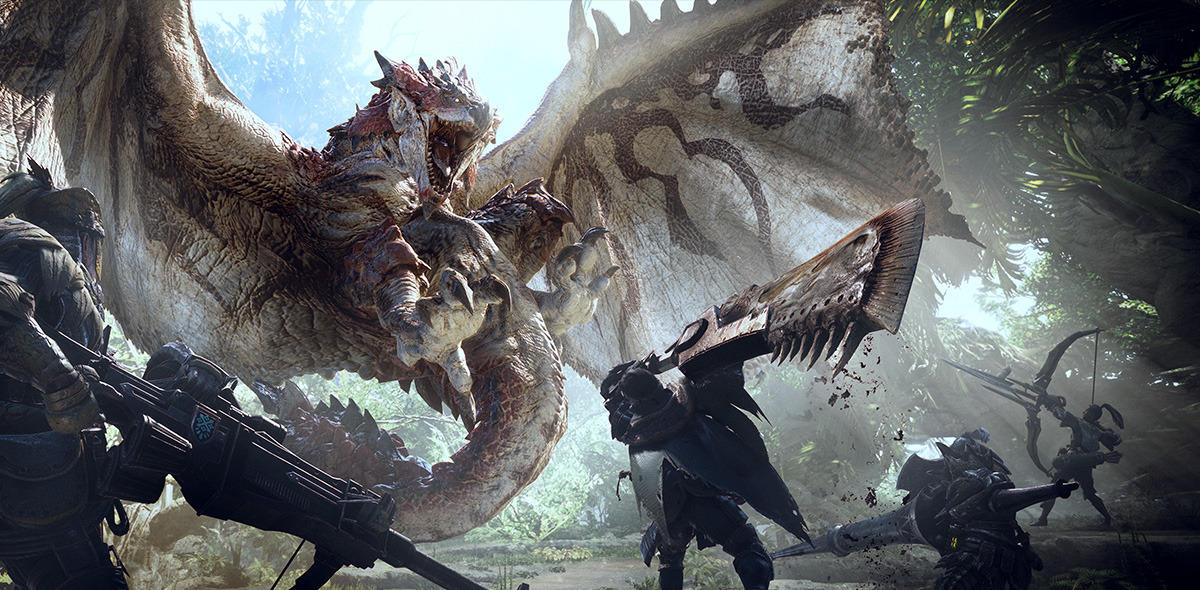
In an industry that is filled with space marines, bald military types, and professional killers, stepping into the world of Deer God, by Crescent Moon Games, was incredibly refreshing.
Deer God starts off laying down the story hard as an omnipotent Deer God requires the player, a young fawn, to right the wrongs of the crimes against nature. But you are no ordinary fawn. Through some sort of soul transference, the player is actually a hunter who died in a accident while shooting an awe-inspiring stag and is reborn as a fawn. And only when you have gathered enough karma will the Deer God return you to your human body.
The gameplay will remind you of endless runners like Canablat, or other roguelikes where environments are procedural generated. However, the first thing you are likely to notice is the pixel art style graphics. The art style is very pleasing, with good use of color and beautiful detail in everything you come across in the environment. The foreground showcases some great lightning techniques and particle effects, and there is a nice collection of critters to encounter, help, fight, and defeat.
Galloping around as a four legged fawn feels different then controlling a humanoid runner. The game will have you monitoring a hunger meter as well as health bar. Food is dropped all around the stage for you to keep that bar full, but lurking predators, hunters, and other animals will seek to deplete your health bar. They are pretty standard mechanics and function as they should.
There are other abilities to acquire, most of which you will get from solving basic environmental puzzles, or just found about in the world. What starts as a game with just a single button tackle, ends up being a mad dash of accumulating powers such as fireballs, planting bouncy mushrooms, and lightning bolts.
As you keep your furry avatar alive, the fawn will begin to grow into an adult, increasing its speed and strength. This is where the roguelike features come in, because once you die, you will lose the growth of your deer when you respawn. In the Normal difficulty mode, you will find yourself respawning as a newborn fawn at checkpoints, whereas in the Hardcore mode all you will find is perma-death. In true roguelike fashion.
 Deer God does have boss battles as well to use your newfound powers on. Most of these bosses seem to be found randomly in the world, so you may not run into the same ones at the same times through different play throughs. Fighting the bosses showcases some of the more tactical moments in the game, whereas fighting regular enemies felt shallow.
Deer God does have boss battles as well to use your newfound powers on. Most of these bosses seem to be found randomly in the world, so you may not run into the same ones at the same times through different play throughs. Fighting the bosses showcases some of the more tactical moments in the game, whereas fighting regular enemies felt shallow.
The biggest enemy of Deer God is repetition. Sure, this genre calls for a certain amount of it, but after a few bosses, a few puzzles, and a few deaths, I found that the fun had diminishing returns. The procedural generated moments could cause some confusion or stress as well. If you have certain goals or ideas in mind, the progress may become hindered due to the procedural environment not quite working with you or giving you what you need.
As you defeat enemies, your karma bar will increase. The goal of Deer God is to get that bar completely full. You have to be careful of what you are doing as you can accumulate bad karma as well. Bad karma has many functions from unlocking different abilities, to punishing you for killing innocent animals. Acts such as furry genocide may have you returning to the world as a rabbit or another small animal that you will find useless in combat. You will need to do something special in game to revert yourself back into a fawn, so all is not lost.
There is a multiplayer mode in Deer God as well, where two players can work together to solves puzzles. The idea is to just survive as long as possible. There are no quests, and if one of you dies, the other one has to mate with another deer to create a fawn. If both player’s deer die, the game comes to an end. It was fun enough for a short while, but with nothing guiding you or no real goals, I found multiplayer to be a one and done experience. The woes of repetition unfortunately follow into this mode as well.
Deer God is a pretty and inoffensive runner, but it also feels a lot like many mobile games I have played. If you need a calming title to play on the Nintendo Switch, Deer God‘s identity shines through with its focus on nature and playing as a fawn.
Pokemon X is awesome. If you disagree then you are disagreeable. You like that logic? You better or else Pokemon X and I are gonna beat you up.
First off, the last Pokemon game I played was Pokemon Silver back in the year 2000. That’s crazy. 13 years ago. Somehow Pokemon X managed to hold on to everything that made Red/Blue & Gold/Silver fun to me back then, but also managed to change everything. “The more things change the more they stay the same”. That sort of thing. Having missed five generations of Pokemon game also means there are several hundred Pokemon I’ve never heard of before. It’s a delight to see all the new ones alongside my old favorites.

Pokemon Silver
As I played, the old theme song line of, “Gotta catch em’ all” rang true. I have spent hours walking through the tall grass just looking for the different variety of Pokemon that show up, battling the ones that I already have and catching the ones I don’t. I will spend many more hours playing this game within the game.

So Pokemon X has aerial battles. Only your flying Pokemon can take part in them.
True to form, Pokemon have to use HMs to “cut”, “surf”, etc. Most of the time I don’t have a move I am willing to give up, so just pass by the thorny bushes, noting their locations so that on my second play through I will get them.
Game Freak removed all the annoyances from the old games, like the fact that only my Pokemon in battle got exp (now everyone at least gets a little). They also gave me awesome roller blades. It’s fun.

Did I mention you can ride Pokemon too?
Graphically there is a huge overhaul and it’s great. There are dynamic camera angles that go from over the shoulder third person to birds eye view, to the traditional offset angle. The 3-D is great. It only activates during battles and special events, saving battery power and not over-playing it.

This cave was so cool
And I finally have a T-Rex Pokemon. Need I say more? I have five badges currently and I’ll update you guys when I have more.

Yep.
Johnny Townsend
Staff Writer
koala@ihogeek.com
As a young lad I used to hang out at my grandmother’s very large, very creepy house and play video games with my older, cooler cousins. Mortal Kombat, Suikoden, and Doom. Back then I would sit around starry-eyed and listen as they talked about the “next-gen” of video-games. I would ask stupid questions like, “Can I throw my sword into the ceiling, climb up on it, wait for an enemy to come around the corner and then drop on them?”. They would chuckle and say something along the lines of, “No, not yet.”
Fast forward seventeen years and Final Fantasy XV has given me my dream. Finally (pun totally intended). Not only did they give me my dream, but they added some extra special sauce on top. I can throw my sword hundreds of yards and then teleport to my sword, dangling from it in insanely cinematic situations.
With the main game and story being developed by Tetsuya Nomura (one of the main character designers of Final Fantasy VII fame and also the director of Kingdom Hearts), the combat system being developed by the Kingdom Hearts 2 team, and the cut scenes being handled by the Advent Children team we are in for one hell of a game. Don’t take my word for it though. Watch these two videos and have your mind melted. The first video has a good chunk of cut scene during the first half, but then it kicks into actual gameplay.
I’m not sure exactly what the story is yet, but it looks to me like a combination of Gangs of New York and Romeo and Juliet (specifically the struggle between the Capulet’s and Montague’s). Works for me.
Please enter the url to a YouTube video.And this video is solely gameplay footage. I think It’s interesting how your other party members interact with you in a completely organic way.
Please enter the url to a YouTube video.Fulfilling a fantasy that I never knew I had is the Xbox One exclusive Titanfall. This new dream of mine is to eject from a mech on the verge of fiery explosion, rocket into the sky, land on the roof of the opposing mech, and unload a full clip into its skull, sentencing it to the same death it attempted against me.
The Call of Duty influence is obvious as the game is being made by Respawn Studios, the company founded by Jason West and Vince Zampella (the co-founders of Infinity Ward who took most of their team with them when they were fired for “insubordination”). Luckily, they have chosen to not simply retread the same foot-steps the Call of Duty franchise has been burning out and instead took a fresh approach.
This game is it is a combination of giant robot fighting, Call of Duty, and Mirror’s Edge parkour. Oh, and rocket packs like in Vanquish. Yep. I’m buying it.
Please enter the url to a YouTube video.And then came Bayonetta 2. If you haven’t played and beaten Bayonetta 1 I implore you, nay… I beg thee to do so. There’s an anime by the name of Tengen Toppa Gurren Lagan where with every episode the show grows more and more over the top until the end where they are literally throwing solar systems at each as ninja stars. Bayonetta embraces this sort of audacity and revels in the set pieces that will have you simeoutaneously saying, “WTF HAHA!” and, “YESSSS!!!”.
The trailer for Bayonetta 2 shows off the heroines cute new hair style and then starts off at 100% over-the-top. This game. Is going to be. In-sane.
Please enter the url to a YouTube video.


